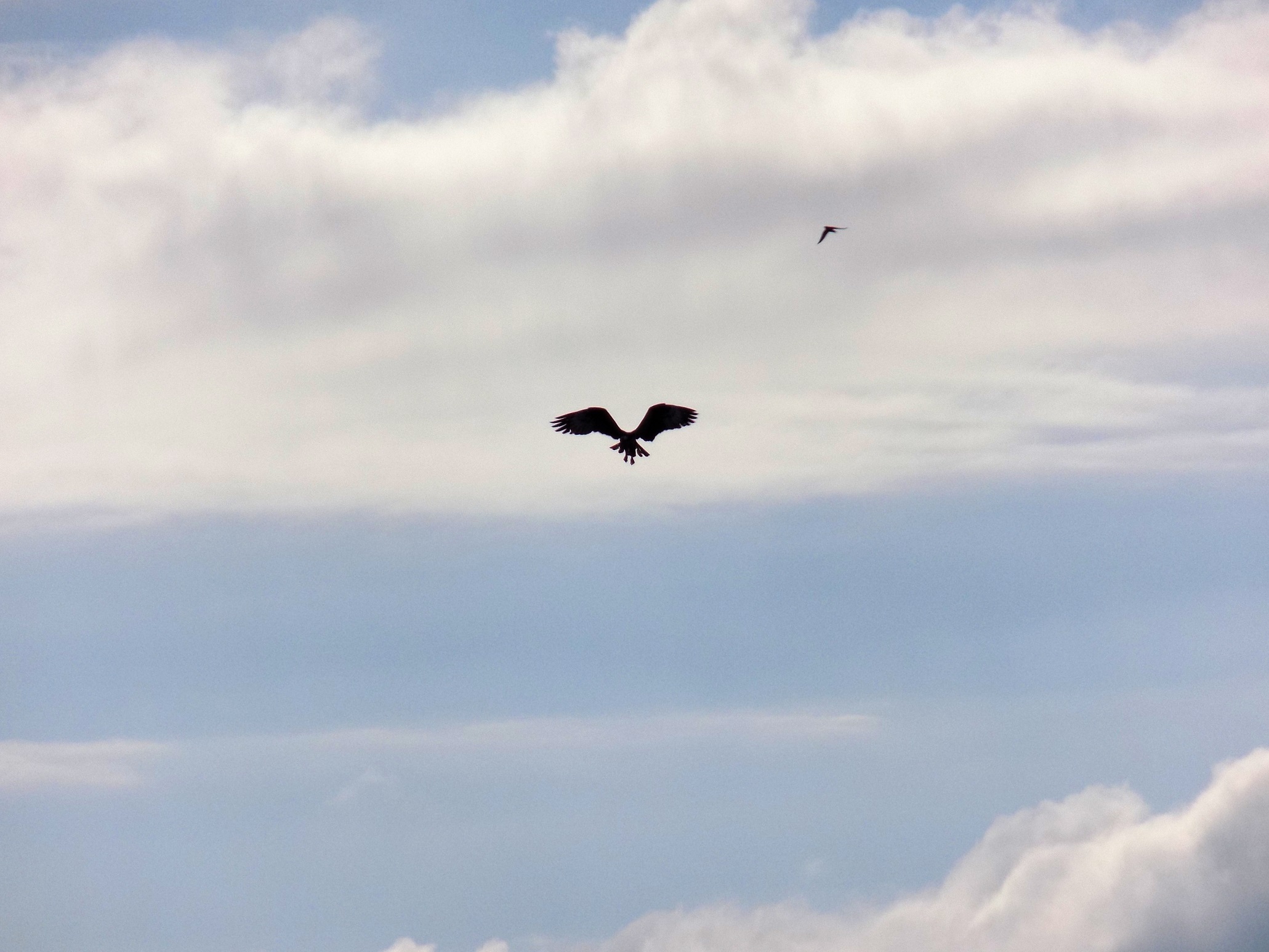


This week our guest of honor is the Osprey (Pandion haliaetus), also called a Fish Hawk.
The Osprey is a large bird of prey that eats exclusively fish. Their pelage is monochromatic. A pearl white canvas stroked and shaded by charcoal. Males set themselves apart with a band of coffee streaks across their chest. Their figure is sleek and slender but with wings of impressive breadth. Their bill is stout and sharply hooked, over which clear and expressive eyes set in topaz gleam. A black mask wraps their face, blending into a disheveled, shaggy mane of feathers. Their feet are set wide with sickle-tipped toes and barbed scales. Inverted treble hooks of articulated muscle and bone fit specially to this aerial angler.
Ospreys employ these claws with daredevil-esque courage for devastating effect. Osprey use their broad wings to glide high above the surface of the water. Their sulfur eyes peeled and darting between the wakes. A school of fish is identified. Wings arch with powerful beats, suspending the Fish Hawk amidst the wind. In this suspension a quarry is determined and a trajectory calculated. Wings lock back and feet lock forward as the Osprey goes into freefall. The raptor hits the surface of the water, feet forward and claws outstretched, at 50 miles per hour. The impact drives its feet to the fish and its claws through the fish before the prey can even react. The Osprey spreads its wings at the last moment to lift it back into the air, fish in tow in toes. They’ll carry their catch facing forward, like a torpedo bomber, away to their nest or a branch to feed.
Osprey are a cosmopolitan species, meaning they are found across the Earth. They’re found wherever there is land beside a large body of water. They can be seen on the beach, over the lake, down the river, along the creek, or across the marsh. Ospreys are a common sight here in the Lowcountry, where they build their landmark nests. Ospreys mate for life and can reuse the same nest their entire lifespan. In the wild, Ospreys build large dish shaped nests from sticks and moss in the highest crook of a dead tree. This gives the hunters protection from egg eating predators and the visibility to guard against flying foes. However, with humanity’s ever expanding telecommunication and utility infrastructure, the Osprey has discovered a new preferred nesting habitat: power poles and cell towers. It’s true, we’ve inadvertently created a worldwide network of ideal nesting habitat for a global bird species. Although this nest preference does cause issues for both the linemen and the Osprey, it may have been critical in the species’ survival and recovery, especially in an ever more deforested landscape.
Osprey populations were decimated in the mid-1900s by the widespread use of the pesticide DDT. This pesticide runs-off into water systems and bioaccumulates. This causes the poison to concentrate in the flesh of aquatic organisms, with concentrations rising exponentially as you move further up the food chain. Because of this, species that fed primarily on large fish, like the Osprey, accumulated the highest concentrations of DDT in their bodies. DDT had the side-effect of making eggshells paper-thin, dropping nesting success dramatically for all but the most remote populations. Thanks to bans on DDT, increased government protection, and that excess of nesting habitat in an increasingly deforested landscape I mentioned, the species was able to recover with a vengeance!